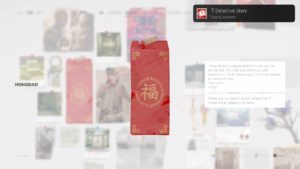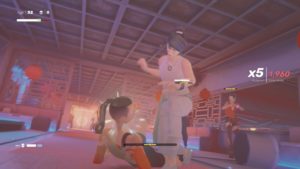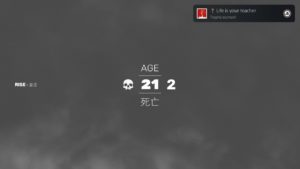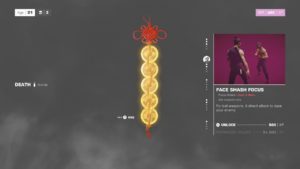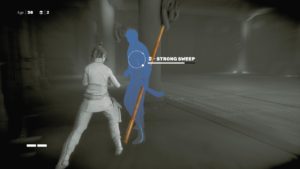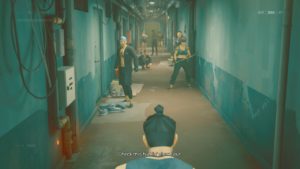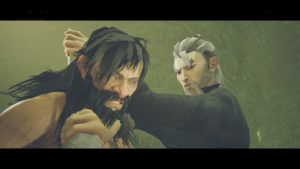It is a tale as old as time – a young student witnesses the death of a loved one and attempts to get revenge against the killer. No, this isn’t the fourth iteration of “Shenmue”, but is rooted in kung-fu action. “Sifu” created waves of triumph and frustration amongst gamers early in 2022 via its digital release. The Paris-based developer Sloclap wanted to invoke the tension of learning martial arts with the satisfaction of pulling off something only believed accomplished by someone better or more experienced.
In hopes of adding to the fan base that praised this little indie title that could, Sloclap implemented several new features alongside the on-disc release of the “Vengeance Edition”. Due to “Sifu” both being released originally during a very hectic time and digital only made yours truly wait after the disc version was announced not long after to see if I had what it took to learn the way of becoming a true martial arts master without dying of old age.
Did I Complete “Sifu: Vengeance Edition”?
Taking control of an unnamed male or female character, the player concludes what was an unseen eight-year-long training session by using gathered information about their father’s killers to hunt them down. After a little over twelve hours, I completed the game on “Disciple” difficulty – “Sifu’s” original difficulty setting without the ability to change it when it was first released. A second playthrough took about a third of the time to finish mostly due to the game’s shortcut system associated with the level design, permanently learned skills, and really getting the hang of “Sifu’s” overall systems that didn’t fully click until the final stage the first time.
After witnessing the true ending by sparing every boss and barely getting the trophy for finishing the story at age twenty-five (literally at the required age), I turned down the difficulty to the new easy “Student” version so I could (mostly) painlessly gather the missing eighty-plus collectibles with some only becoming unlockable by attaining other collectibles in a latter level. After gathering all the collectibles with some help from various guides, unleashing every takedown available that, luckily, only took two stages during a third playthrough to complete, and checking out photo mode allowed me to, surprisingly, earn another platinum trophy.
Did “Sifu: Vengeance Edition” Live Up to the Hype?
To live and die in the world of “Sifu” is to experience what it means to learn through failure. The initial minutes that prologues the story gives players a glimpse of what their character may be able to do with learned skills and, most importantly, the difficult differences between regular enemies and bosses; though even the most unassuming adversary can knock a year or two off the protagonist’s life if the player isn’t careful. The basis of “Sifu’s” gameplay is relatively par the course on the onset. Players can mix light and heavy strikes alongside timed blocking with a perfectly guarded moment where the player taps the block button right before the main character is struck causes a parrying motion and an opportunity to retaliate.
What really makes blocking interesting is the “Weaving” mechanic. By holding down the guard button and rotating the movement stick in a particular direction, the protagonist bends, ducks, and slightly jumps that, if used properly against an enemy in mid-combo, will see an attack avoidance while time temporarily slows down and the adversary is left open for a counterstrike. Both the playable character and their enemies have “Structure” bars underneath (or, in the case of bosses, above) their health bars that, when broken, causes an enemy to become stunned and open for a slight health-restorative takedown or throw with the latter being perfect for pitching someone into a fountain during the third level. If the protagonist’s “Structure” meter reaches its maximum, they are too staggered and, depending on the amount of enemies, can easily end in death for the revenge-fueled fighter.
“Sifu” doesn’t have the stereotypical respawn system seen in many games like this. On the “Disciple”/original difficulty, when the main character dies they age at least a year older. If the player can’t avoid a complete loss of health, the “Death Counter” ticks up by one. If the player dies multiple times without defeating the stronger enemies that transform mid-fight as displayed by their new yellow glow, the “Death Counter” will add multiple years to the protagonist’s life; turning them into a glass cannon where their health is significantly diminished, but their damage output is heightened beyond comprehension.
Doing well in combat to avoid multiple deaths isn’t just rewarding for the player personally, but also in-game. By avoiding being hit, knocked down, or dying, the player will gain multipliers to their level score and experience points attained after winning any fight. These points gathered can be spent at the few Shrines located in each level and the skill tree.
At a Shrine, the player has the opportunity to choose one buff from three sub-categories. One category is solely connected to how old the main character is when they reach the Shrine with two options focusing on boosting durability being locked out after the protagonist reaches age forty-one. The other sub-category utilizes the overall level score as a way to unlock buffs associated with combat rewards via avoidance & parrying. The last Shrine sub-category actually spends experience points to improve weapon damage for the multitude of weapons scattered throughout each level, add segments to the “Focus” bar, or, most importantly for those who die a lot, reset the “Death Counter”.
As noted, the game does feature a skill tree as well with the experience points gained being used to unlock new attacks like rushing an enemy knocked backwards for a follow-up series of strikes, combo extenders, and, most importantly, “Focus” attacks. On the left-hand, lower portion of the screen is one dark blue bar that fills up the more the protagonist successfully weaves or parries attacks. When this blue bar turns white, the player can pull off a “Focus” attack that ranges from barehanded eye pokes to stabbing someone in the thigh. Due to how long it usually takes to fill up the “Focus” bar, players won’t be able to spam “Focus” attacks.
Most importantly to skills in general is the fact if players want to start a new run after finishing the story they lose every previously purchased skill. To avoid this issue, players will have to level up each purchasable maneuver at least four times to permanently lock said technique. Also, portions of the skill tree are blocked off as the protagonist ages by every ten years; meaning the bottom row of skills are completely unattainable after the main character reaches age thirty unless the player restarts a completed chapter and finishes it again at a younger age than their previous success.
While “Sifu” does have a checkpoint system, to ensure nothing is lost including experience points the game demands the player to finish a level in one run (though, thanks to the checkpoints/auto-save system dictated by three dots that appear at the screen’s bottom right corner, players can go back to the main menu without fully quitting a level; but the checkpoint may be a lot further away than expected). The developers wisely put in a chapter select option that makes it easier to not only go back and gather those missing collectibles or take advantage of shortcuts opened during an initial run, but also offer the player a chance to do better. The game saves the player’s best run per stage and, if the player continues the story chronologically, will begin the next chapter at their youngest age achieved during the previous level.
There are some definite issues with the overall gameplay starting with the camera. In the more enclosed areas or boss battles, the camera sweeps in and, a majority of time when this problem occurs, makes it impossible to see the protagonist or enemies from behind. Another problem that occurs due to the camera is when the player performs a takedown and the viewpoint zooms into the action while swinging around in dramatic fashion. The problem with takedown presentation is the fact the foes are still moving during the animation and can hit the player right afterward without warning. The most annoying aspect of fighting certain enemies is their ability to armor through attacks or pull off their own weaving avoidances without much consequence even if the player utilizes an impressive parry.
The “Vengeance Edition” stands out due to certain updates unavailable during the game’s initial release including the implementation of difficulty settings. While “Disciple” represents the game’s original difficulty, “Master” turns enemies into relentless monsters across the board. “Student”, however, is the “easy” setting that can still be difficult for those who don’t want to learn the combos of any enemy or assume every boss will be a push-over now. What really makes “Student” less difficult is the removal of the “Death Counter” with the protagonist only gaining one year of age per death instead of stacked aging.
To complement this lack of a “Death Counter” in “Student” is the ability to spend experience points at a Shrine to remove five years from the main character’s age. With this age removal option in “Student”, the developers could’ve kept the “Death Counter” to maintain some of the stress & difficulty from the original setting. One thing the developers did to ensure players didn’t switch back & forth between difficulty levels is locking a playthrough at the lowest difficulty chosen and the player having to begin a new save to play at a higher difficulty.
Beyond some of the technical issues associated with the camera and enemies avoiding damage without any discernible reason, the game runs incredibly smooth without a single crash or game-breaking bugs. The unique, almost paper-like art style looks fantastic most of the time; though the face animations can be a little wonky. The music is mostly subtle, but gathers a more haunting aesthetic latter in the story.
What really stands out from an audio perspective is the general sound of combat from a beer bottle shattering on someone’s head to the simple, though devastating echoes of the main character pounding an enemy’s chest like a drum. While the game does feature the ability to remap the control scheme, there’s a lot of necessary hand dexterity that may be too much for some players especially due to the high-level requirement for a player’s reflexes.
There’s no denying “Sifu” is a challenging, almost emotionally-breaking experience that will definitely turn off some players. Thankfully, the “Vengeance Edition” allows for players who may have been scared by the reported difficulty the chance to strike down enemies in stylish fashion as they should in this fantastic, though smaller-scale offering.
Should You Play “Sifu: Vengeance Edition”?
The original version would definitely have a “buyer beware” tag associated with it due to the overall difficulty alongside lacking accessibility features that will cause less dexterous gamers to suffer death after death. The “Vengeance Edition”, however, presents the perfect gateway for new players to give this game a chance for the same price as the original digital-only version. For gamers up to the challenge no matter the difficulty, “Sifu” represents all that is satisfying about moving through a sea of enemies ready to tear your aged character apart as if this was a scene from “Oldboy”; only for them to discover they’ve bitten off more than they can chew just like a machete-wielding botanist learned two stages earlier.


